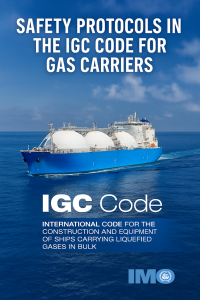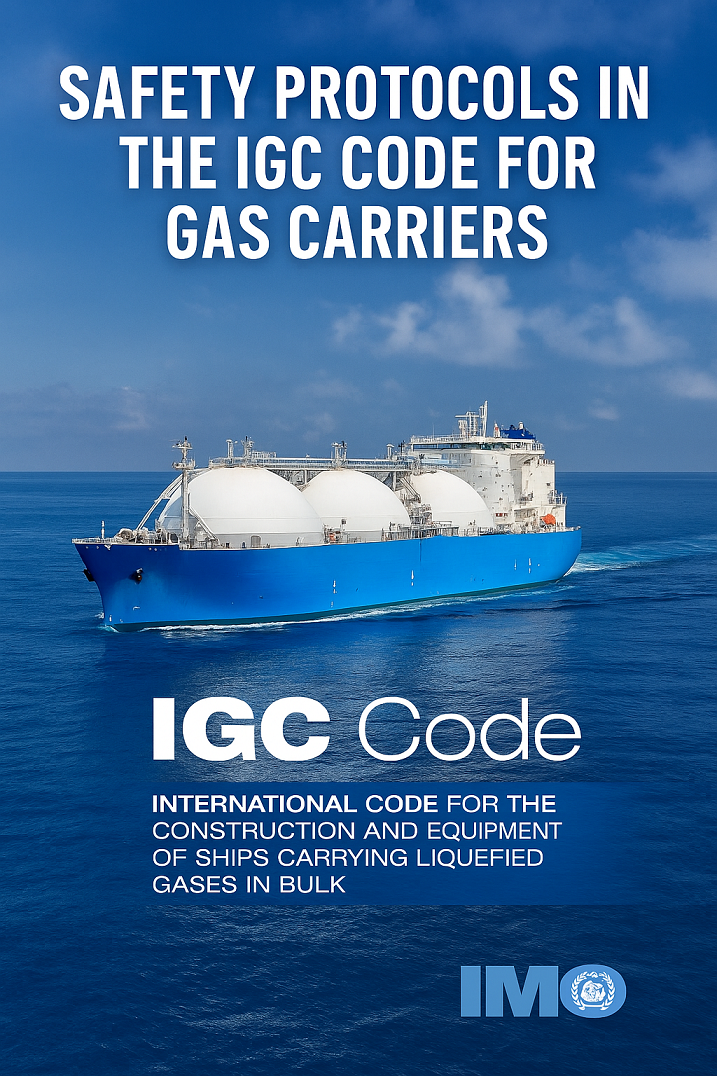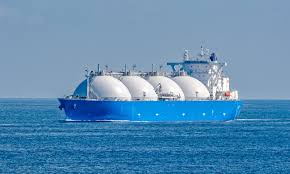Explore the top 10 essential safety protocols in the IGC Code for gas carriers, from cargo containment systems to emergency shutdowns. Learn how these standards safeguard seafarers and protect the environment.
Why Safety Protocols Matter for Gas Carriers
Imagine navigating a ship loaded with liquefied natural gas (LNG) or ammonia—substances that are toxic, flammable, and pressurized—across busy sea lanes. One breach or spark could lead to catastrophic consequences. That’s why the International Code for the Construction and Equipment of Ships Carrying Liquefied Gases in Bulk (IGC Code) exists: it sets the global minimum safety bar for ship design, equipment, and operations.
In this article, we’ll explore the top 10 safety protocols in the IGC Code, using real-world examples, recent updates, and expert insights. These protocols aren’t just paperwork; they are lifesaving systems that protect crew lives, cargo integrity, and the marine environment.

1. Cargo Containment System Design
At the heart of gas carrier safety is the cargo containment system (CCS). The IGC Code requires tank types A, B, or C (independent, membrane, or prismatic), with materials and insulation calculated for pressure and temperature extremes like −160 °C
Design standards ensure:
-
Dual barriers to prevent leakage.
-
Pressure relief valves to avoid overpressure.
-
Redundant monitoring for temperature and pressure.
Case in point: ABS’s recent updates set uniform strength requirements for Type C tanks to better withstand fatigue and stress.
2. Ship Survival and Tank Location
The IGC Code requires gas carriers—especially Type 1G (highest hazard)—to withstand severe damage without catastrophic tank failure
This involves:
-
Locating tanks inboard.
-
Using hull girder analysis (e.g., ABS SafeHull standards) to design tank supports
-
Maintaining freeboard and intact stability per load line rules.
This ensures that even in a collision, the cargo remains contained and the ship stays afloat.
3. Process Piping and Pressure Vessels
Cargo systems must resist cryogenic stress and maintain pressure integrity. IGC specifies:
-
Low-temperature rated piping and welds.
-
Pressure relief valves sized per tank capacity.
-
Thermal insulation to prevent brittleness.
Recent amendments clarify valve testing and pressure relief settings, aligning with IACS guidance
4. Fire Protection and Detection
Safety aboard gas carriers includes robust measures for fire prevention
Required systems include:
-
Fixed gas fire pump systems (foam or CO₂).
-
Dedicated fire zones for machinery spaces.
-
Gas detection in vents and cargo areas.
-
Quick-acting fire doors.
An IACS safety panel has drafted improved standards for dry-powder extinguisher discharge tests and venting clarity
5. Emergency Shutdown (ESD) Systems
The IGC Code mandates automatic Emergency Shutdown (ESD) to instantly isolate cargo systems if unsafe pressure, flow, or temperature arises
ESD protocols cover:
-
High/low temperature and pressure trips.
-
Remote control from the bridge.
-
Manual backup systems.
These systems are critical for preventing uncontrolled releases and catastrophic failures.
6. Electrical and Instrumentation Safety
Electrical systems onboard must prevent sparks and manage potentially explosive atmospheres
Key provisions include:
-
Ex-rated wiring and equipment classified for Zone 1 or 2 areas.
-
Explosion-proof instruments.
-
Redundant power systems for monitoring.
INS update notes reinforce correct ingress protection and certification
7. Mechanical Ventilation and Gas Detection
Proper gas management systems are essential. The IGC Code mandates:
-
Forced ventilation that exchanges cargo area air regularly.
-
Gas detection sensors linked to alarms and control systems.
-
Monitoring during bunkering and de-ballasting operations.
A 2024 SIGTTO guide highlights the importance of monitoring toxic gases like ammonia and LPG particularly closely
8. Personnel Protection
To protect the crew, the IGC Code specifies personal safety equipment and protection .
Requirements include:
-
SCBA and gas-tight suits for hazardous zones.
-
Emergency breathing air for tank entries.
-
Safety harnesses and thermal protective gear.
Crew must be trained to use these before entering cargo tanks or enclosed spaces
9. Filling Limits and Tank Cool-down
The IGC Code sets maximum fill limits (usually 98%) and requires safe tank cool-down before filling
Safety measures:
-
Heat tracing to prevent condensation.
-
Monitoring vapor space to avoid rollover.
-
Limit overrides with flag-state approval for high fill levels.
Analogy: Like filling a cup to the brim—leave room for thermal expansion to avoid spills or pressure buildup.
10. Certification, Surveys, and Maintenance
The Code requires:
-
A valid International Certificate of Fitness for Gas Carriers (ICOF) after initial, intermediate, and renewal surveys
-
Ongoing Class society monitoring (ABS, DNV, Lloyd’s, BV, etc.).
-
Maintenance and testing logs aligned with HSSC standards.
Recent SOLAS amendments added requirements for watertight door indicators to maintain integrity
In-Depth Example: Adapting to Ammonia Fuel
A major 2024 IMO amendment to Chapter 16 allows ammonia cargo carriers to use their cargo as fuel—once safety standards match cargo carriage protocols
This included:
-
Toxic gas handling systems under IGF & IGC.
-
Revised venting and fire insulation.
-
Interim guidelines and early adoption from 2026.
This shift illustrates how the IGC Code adapts to new fuels and evolving maritime energy needs.
FAQ
Q1: Who must comply with the IGC Code?
All gas carriers, including LNG, LPG, chemical gas carriers, regardless of size, carrying vapor pressure cargoes over 2.8 bar at 37.8 °C .
Q2: What is an ESD system?
ESD = Emergency Shutdown. It isolates all cargo-related flow and power during unsafe events.
Q3: Can tanks be filled above 98%?
Yes, but requires flag-state approval and risk assessment under the revised code .
Q4: How frequently are surveys required?
Surveys occur at initial certification, intermediate (2½ years), and renewal (5 years), plus annual Class inspections .
Q5: Does it cover using cargo as fuel?
Yes—Chapter 16 now includes gas fuel use and expansion to ammonia, including safety protocols .
Conclusion: Safety Is Non-Negotiable
Gas carriers transport some of the most hazardous cargoes on earth. The IGC Code’s ten safety protocols underpin everything—cargo containment, structural integrity, fire safety, emergency controls, and crew protection. As new fuels like ammonia become mainstream, the Code evolves, demonstrating IMO’s commitment to maritime safety.
Complying with these protocols isn’t just regulation—it’s essential to protect crew, cargo, vessels, the environment, and port communities. The next time you see an LNG tanker at sea, know that behind its smooth operation lies a network of safety layers born from the IGC Code.
References
-
IMO. (n.d.). IGC Code overview imo.org+1imo.org+1
-
SIGTTO. (2023). Gas as Fuel on Gas Carriers sigtto.org+1dco.uscg.mil+1
-
DNV. (2024). MSC 109 amendments enabling ammonia fuel use ww2.eagle.org+3dnv.com+3safety4sea.com+3
-
ABS. (2023). Guide for Independent Tank Gas Carriers ww2.eagle.org+1ww2.eagle.org+1
-
IACS. (2024). Unified Interpretations on Strength Requirements linkedin.com
-
MSC Resolutions MSC.370(93), MSC.491(104), MSC.456(101) lr.org+10imo.org+10wwwcdn.imo.org+10
-
ICS. (2022). Tanker Safety Guide – Liquified Gas reedsmith.com+3ics-shipping.org+3dco.uscg.mil+3
-
Wikipedia. (2025). IGC Code, IGF Code, Gas Carrier entries en.wikipedia.org+1linkedin.com+1


